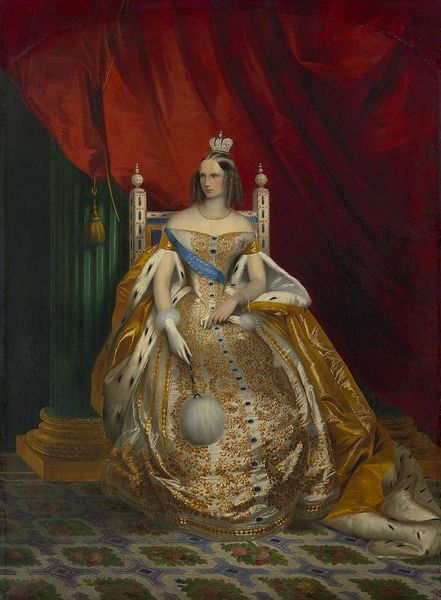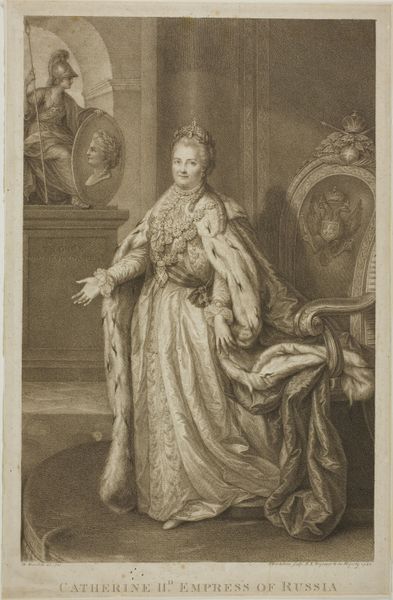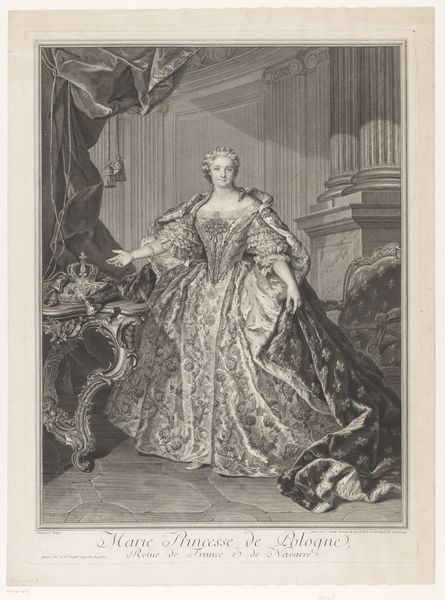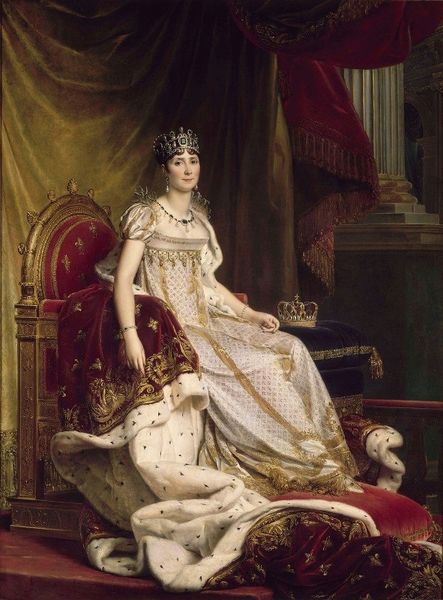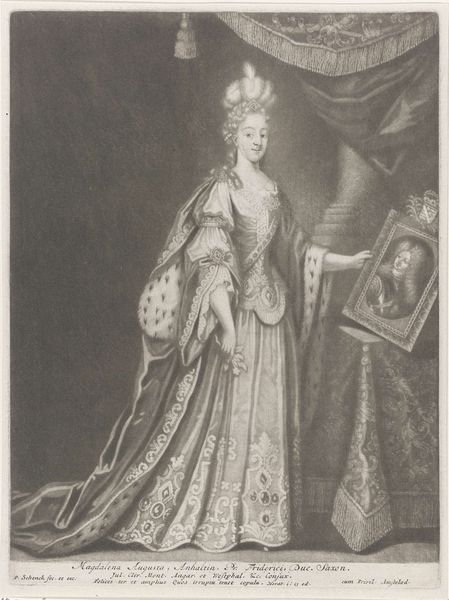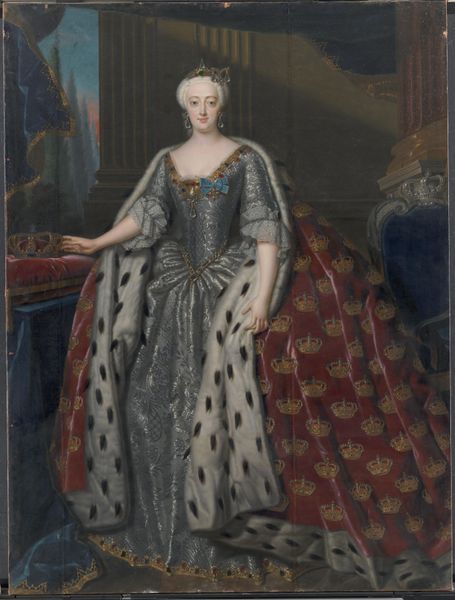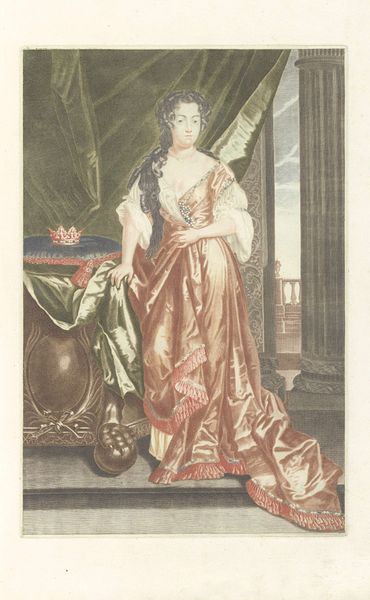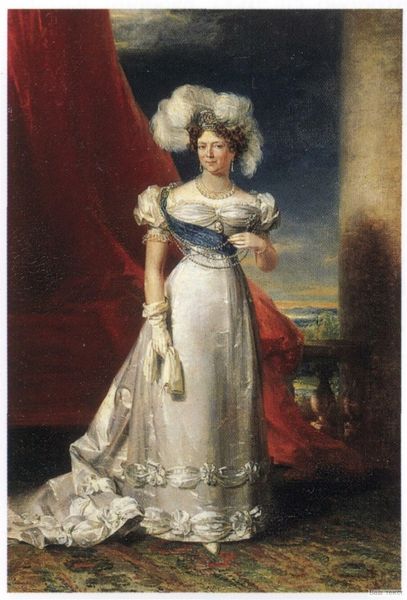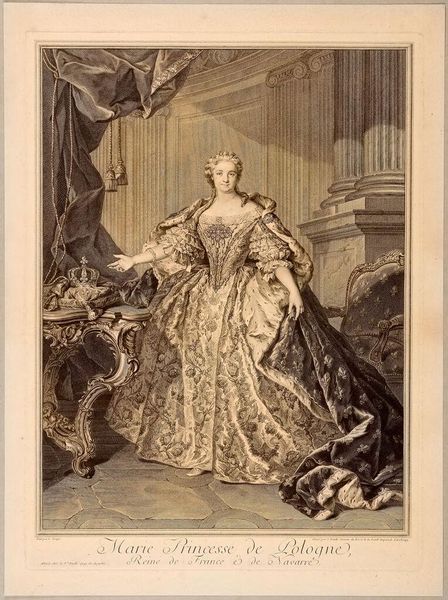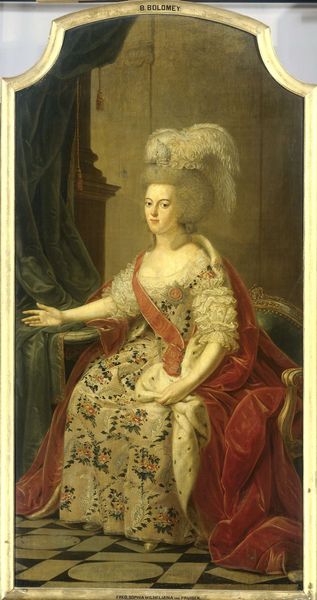
drawing, print, paper, engraving
#
drawing
# print
#
figuration
#
paper
#
england
#
history-painting
#
engraving
#
realism
Dimensions: 397 × 286 mm
Copyright: Public Domain
Curator: Let's delve into this regal portrait by George Baxter, created around 1859. It's entitled "Victoria, Queen of Great Britain, India, etc." and the Art Institute holds this print. Editor: Immediately striking! The artist has chosen a somewhat theatrical pose, emphasizing the crown and her robes. It evokes a certain calculated presentation of power. Curator: Absolutely. Baxter was renowned for his unique color printing process, a kind of engraving using oil colors. One has to consider the labor behind such an image. Imagine the multiple blocks needed to achieve this chromatic complexity and detail, at a time when photographic reproduction was nascent. The print offered a tangible way to possess the Queen's likeness, a powerful object for a burgeoning middle class. Editor: Speaking of power, notice how carefully the regalia is rendered. The crown isn't merely decorative; it's loaded with symbolic meaning. The ermine trim of her robe evokes centuries of royal lineage, but it also carries an association of innocence, meant to indicate a lack of moral stain from leadership, at least ideally. Curator: Interesting observation. It seems though that realism clashes a bit with the ermine, isn't it? This kind of detailed labor served, perhaps, to highlight this ideal and conceal its cost by turning its means of making into spectacle itself. Editor: Perhaps. The chair itself, adorned with lion heads, acts as an emblem of the British Empire, echoing the lion rampant on the Royal Standard. Then, the rather ostentatious drapery, feels more staged than functional. I am curious how her face communicates with the signs of empire in tension. Does her somewhat wistful expression imply anything to the viewer? Curator: It's intriguing to note the contrast between the grand symbols of the monarchy and what appears to be the relative smallness of the original drawing before it becomes a print. The mechanical reproduction would’ve multiplied this image far and wide, and at a considerably accessible cost, amplifying the crown. Editor: It leaves us with many ideas on visual history, prestige and empire. Curator: It's indeed fascinating to examine how something created by manual processes became such a significant agent of visual communication and imperial ideology.
Comments
No comments
Be the first to comment and join the conversation on the ultimate creative platform.
